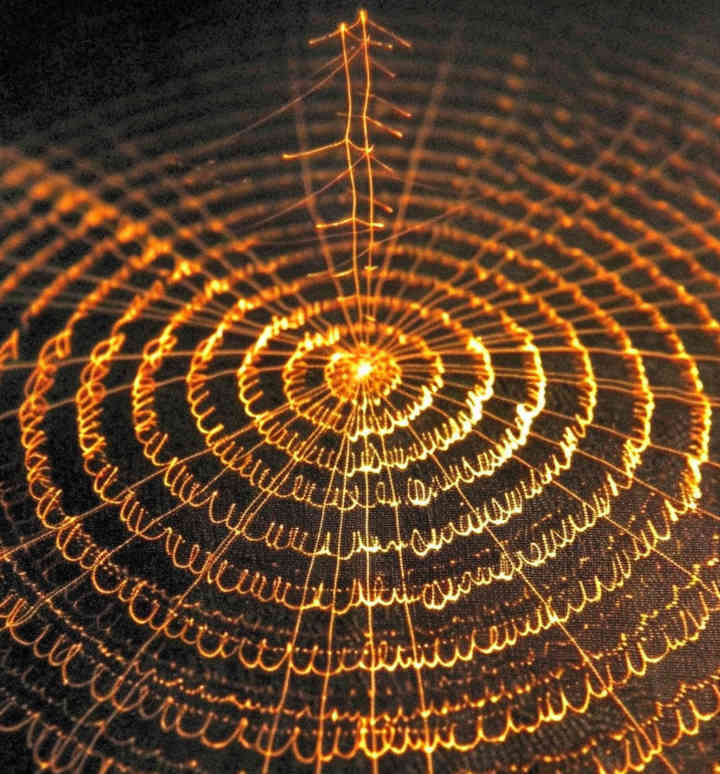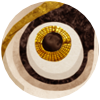What is a Chakra?
Most feelings are projected

What is a chakra? A chakra is an artifact of the proprioceptive projection routine. It's an area not especially innervated - in most cases there seems to be a noticeable lack of innervation at the site of projection. There's been immense confusion here lasting centuries, which is somewhat the willful misunderstanding of premature scientificality regarding the value of "subjectivity": subjective experience is not a question of linear perception of one's own anatomy - occult or otherwise - it's a matter of reprojected proprioception. Therefore both reductionistic dismissal and reactive wishful reification are wrong about the "spiritual". A chakra is probably an artifact of the cerebellar calculus, where there is high overlap and potential for constructive harmonics, due to the cascading effects of bilateral symmetry in the proprioceptive affine space. But a chakra is no less "real" for being an artifact.
Speaking as someone who has practiced meditation for more than 20 years, I can assure you that the chakra phenomenon is quite legitimate. One can sense my impatience with cargo cult scientificality: just because we can't easily measure a thing, does not mean it doesn't exist. The overwhelmingly stupid insistence of those who would study inner experience with a scalpel, those who want to humiliate and destroy living subjectivity because it brings them so much pain to be a personal failure, those who torture and maim animals with a labcoat and a clean conscience, those without an ounce of respect for the mystery of being alive: why listen to them any longer? The tide is already turning: I'm not the only rogue overeducated superfluity who can afford a deeper commitment to the scientific spirit: that is, the use of imagination in place of dismissal where ignorance forces a choice, the supposition of unknown variables, the admission that there not only could be but must be many planes of causality which we cannot yet measure.
But what's the use of a chakra? This on the other hand is where the yogis have failed to justify themselves: most practitioners are happy enough to have discovered something esoteric, and might at most talk about "opening" a chakra as though more open were always better. If we're correct about them, that they represent an inflection point in the constructive harmonics of the rippling proprioceptive network, what would such a point yield? Ask the musicologist: how do you efficiently tune the body of a complex instrument like a violin, without taking it apart, such that it resonates more coherently? You adjust the nodes: find nodal points within the resonant totality of the object and release congestion, such that turbulence decreases or is elevated into resonance - there are masters of woodworking and pottery who know all of this already. There are architects who will tell you similar things about bridges, tunnels, and towers.
It requires about 5 minutes of good instruction to demonstrate the third eye to a beginner. Even for the obtuse, it's just below the threshold of the obvious. But other than serving as a lure for more esoteric delights to come, the use of it generally remains unclear: striving to keep it active is just as misled as striving for maximum consciousness.
This is the meaning of the "subtle body". The subtle body is that body which is projected in space and time. It is not the body perceived, it is the proprioceptive envelope within which the body is allowed to move. This is why this envelope is extensible, retractable, and subject to subtle distortion: full realized agility requires temporary extension from foot to ground, wing to air, hand to tool. This sounds both simpler than it is, and unnecessarily mysterious: but there's no other way to draw out what we all know and all neglect. The subtle body is the dominant constituent of the sensations of a lifeform, not the merely afferent impulse: most of our feelings are projected, and not actually perceived. Understanding the difference is critical to any appreciation of what we're calling "neuromorphic experience", and yet I doubt I'll be understood here by anyone who has not meditated seriously: what it actually feels like to be alive, is not something most people are familiar with - isn't that odd? Isn't that a little unbelievable? And yet it's quite true: but if I could explain myself in unconscious terms, in athletic terms, you would understand.
Joy and fear, desire and rage rarely give way to raw afferent input in a healthy creature: most incoming sensation is muted and neutralized, enfolded into a projected anticipation of feeling. The punctuations of pain are rare, and in fact if we were to "feel" entirely in the linear sense in which current neuroscience assumes, the result would be almost entirely perceived as pain: hyperalgesia is the result of a weakened interpretative proprioception - which is why we feel so little pain when we are most active, vigorous, joyfully aggressive. The dominant feelings of being alive have very little to do with mere transduction, and much more to do with amplification, anticipation, purposive distortion. A "chakra" is merely one artifact within our arsenal of purposive distortion.


